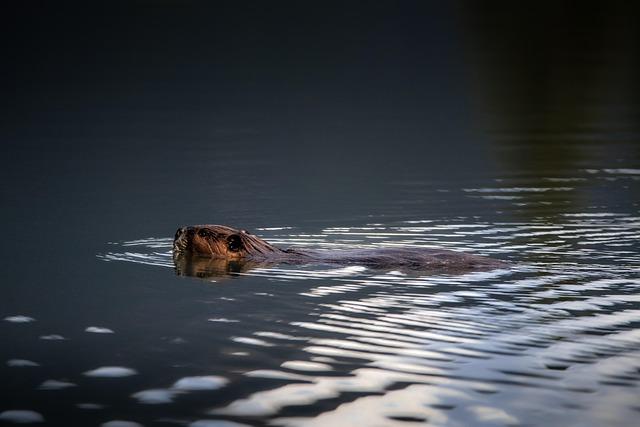Utah State University’s Beaver Ecology and Relocation Collaborative is making strides in wildlife conservation by working to protect beavers from lethal trapping practices. As beavers play a crucial role in maintaining healthy ecosystems, the collaborative’s efforts focus on relocating these industrious animals rather than allowing them to be exterminated. Through research, education, and partnership with local communities, USU aims to promote coexistence with beavers and safeguard their populations across the region.
USU Researchers Lead Innovative Efforts to Mitigate Lethal Beaver Trapping
Utah State University researchers are pioneering new methods to protect beavers from the dangers of lethal trapping through a collaborative effort known as the Beaver Ecology and Relocation Collaborative (BERC). By combining ecological research with community education and innovative relocation techniques, the team aims to preserve beaver populations while addressing concerns related to property damage and water management. Their approach includes detailed habitat assessments and the use of non-lethal deterrents, ensuring that beaver populations continue to support vital wetland ecosystems without becoming a source of conflict for landowners.
Key strategies highlighted by BERC include:
- Humane live-capture and translocation to suitable habitats
- Enhanced community outreach programs to promote coexistence
- Collaborative partnerships with local wildlife agencies and landowners
- Technological innovations in monitoring and tracking beaver movements
| Strategy | Benefit | Impact |
|---|---|---|
| Live-Capture & Relocation | Reduces population loss | Supports ecosystem health |
| Community Outreach | Increases public awareness | Promotes sustainable coexistence |
| Wildlife Partnerships | Enhances resource sharing | Improves management success rates |
| Monitoring Technologies | Provides real-time data | Enables adaptive strategies |
Collaborative Strategies Enhance Habitat Preservation and Community Engagement
At the heart of Utah State University’s beaver conservation initiative lies a network of partnerships that bridges scientists, local communities, and wildlife managers. These collaborative efforts leverage diverse expertise to develop innovative solutions that protect beavers from lethal trapping while enhancing ecosystem health. By focusing on education and hands-on involvement, the project fosters a shared sense of responsibility, encouraging residents to participate in relocation efforts and habitat restoration. This community-driven approach not only safeguards beaver populations but also promotes sustainable coexistence with human activities.
Key strategies that fuel this success include:
- Workshops and training sessions: Empowering volunteers with knowledge about beaver behavior and safe relocation techniques.
- Partnerships with landowners: Creating incentives and support systems for protecting riparian zones.
- Data sharing platforms: Enhancing monitoring and rapid response to trapping incidents.
| Strategy | Benefit | Community Role |
|---|---|---|
| Volunteer Training | Improved relocation success | Active participation |
| Riparian Incentives | Habitat preservation | Landowner cooperation |
| Data Sharing | Timely interventions | Information reporting |
Experts Recommend Policy Changes to Support Sustainable Beaver Relocation Programs
Leading wildlife specialists and conservationists are urging lawmakers to implement strategic policy reforms that will bolster sustainable beaver relocation initiatives. These experts emphasize the need for clear regulatory frameworks that provide funding, standardized protocols, and collaborative platforms between state agencies, researchers, and local communities. By fostering such partnerships, beaver relocation programs can operate more efficiently, reducing reliance on lethal control methods while promoting ecosystem restoration.
To illustrate the benefits of policy change, experts highlight several key recommendations:
- Establish dedicated grants and financial incentives for non-lethal beaver management projects.
- Create uniform guidelines for ethical trapping, handling, and relocation procedures.
- Support educational outreach to inform the public on the ecological value of beaver populations.
- Encourage data sharing and monitoring systems to track relocation outcomes and habitat improvements.
| Policy Element | Current Status | Recommended Change |
|---|---|---|
| Funding | Limited and inconsistent | Establish dedicated, ongoing grants |
| Relocation Protocols | No standardized guidelines | Develop uniform best practices |
| Public Awareness | Minimal outreach programs | Launch community education campaigns |
| Data Sharing | Disconnected systems | Implement centralized monitoring databases |
Final Thoughts
As Utah State University’s Beaver Ecology and Relocation Collaborative continues its groundbreaking work, the effort to protect beavers from lethal trapping offers a promising model for wildlife conservation. By combining research, public education, and humane relocation practices, the team is not only safeguarding Utah’s beaver populations but also promoting the ecological benefits these keystone species provide. As challenges to coexistence persist, USU’s initiative stands as a critical step toward fostering a more balanced relationship between humans and wildlife across the region.
